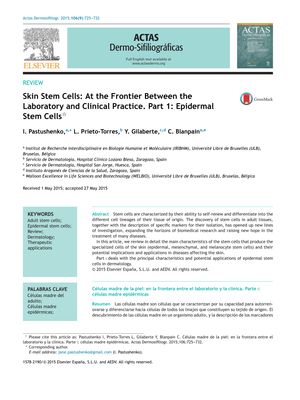Skin Stem Cells: At The Frontier Between The Laboratory And Clinical Practice. Part 1: Epidermal Stem Cells
November 2015
in “
Actas Dermo-Sifiliográficas
”
epidermal stem cells hair follicle stem cells self-renewal differentiation progenitor cell populations tissue repair scarring autologous epidermal stem cells hair regeneration gene therapy oncogenic mutations nonmelanoma skin cancer engineered skin genetic skin diseases stem cells hair stem cells skin stem cells skin repair skin regeneration burn treatment skin cancer gene treatment

TLDR Epidermal stem cells show promise for future dermatology treatments due to ongoing advancements.
The document reviewed the potential of epidermal stem cells in dermatology, focusing on their self-renewal and differentiation capabilities. It detailed various progenitor cell populations in the epidermis and their markers, the role of hair follicle stem cells in hair regeneration, and the identification of stem cells in other skin structures. The review discussed the self-renewal process, the response of stem cells to damage, and their role in tissue repair and scarring. It also explored the possibility that differentiated cells can revert to a stem cell-like state and suggested that epidermal stem cells might be the origin of nonmelanoma skin cancer cells. The document reported that stem cells' long-term self-renewal capacity could lead to the accumulation of oncogenic mutations, potentially initiating cancer. It highlighted the use of autologous epidermal stem cells for treating extensive skin burns, despite drawbacks like the absence of skin appendages in engineered skin. Recent studies have shown potential for hair follicle regeneration, and gene therapy has been discussed as a treatment for genetic skin diseases. Despite the complexity and cost, the document concluded that the future of stem cell applications in dermatology is promising due to advancements in the field.






